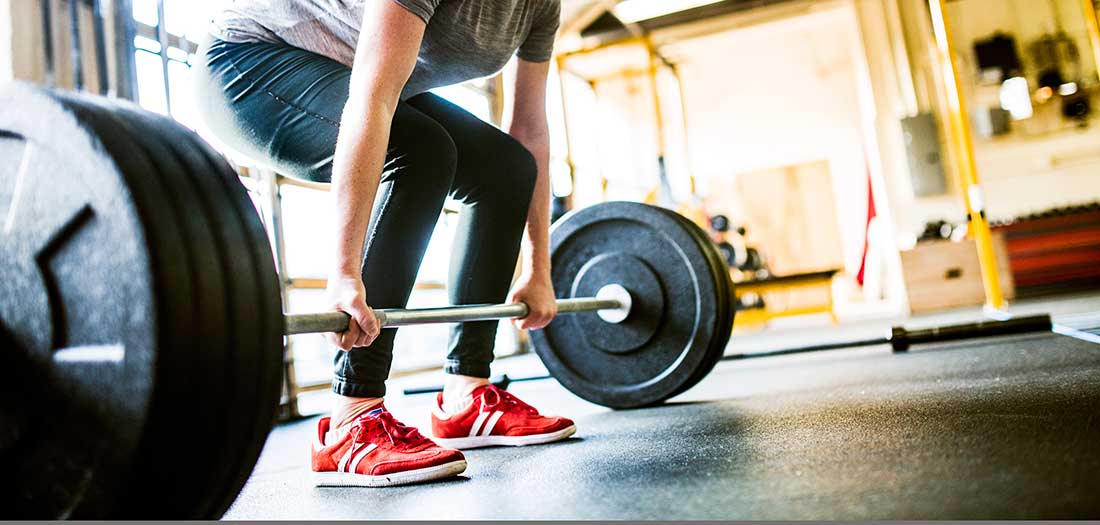Hip pain is a common problem for sedentary and non-sedentary individuals, and many health and fitness pros want to know how they can help their clients who are struggling with this issue.
Chronic pain is a sign that there is irritation or injury at a site. There are a multitude of conditions that can cause hip pain, from trochanteric bursitis to osteoarthritis. The great news is that movement is the panacea for many of these conditions.
In injury assessment, we talk first about the mechanism of injury. This is very simply a description of the condition(s) that led to the injury. By understanding the mechanism of injury, we better understand the injury itself and how to use exercise to heal, not harm.
When in Doubt, Refer Out
Though chronic hip pain is frequently improved through movement training, other causes of hip pain can be caused by serious injury or unassociated with musculoskeletal tissue. Make sure you suggest a doctor’s visit to any client complaining of ongoing pain to rule out conditions that require medical intervention. Even if the diagnosis is musculoskeletal injury, you and your client will proceed with more clarity and confidence after a medical diagnosis.
Here are three common causes of hip pain:
- Chronic Sitting

The average American sits 13 hours a day. This staggering amount of inactivity causes an imbalance of the hip musculature. The hip flexors remain in a shortened position, while the glutes and deep hip rotators remain elongated. Add to that chronic dehydration and the result is tissue that more closely resembles beef jerky than healthy muscle tissue.
This tissue lacks the necessary flexibility and elasticity to allow for smooth and efficient movement. It tears more easily and becomes overstressed more easily, and the rigidity of the tissue leads to more rubbing against bone and bursae.
- Strength Imbalance
A strength imbalance is not the same as tightness or inelasticity. A strength imbalance occurs most often when one’s exercise regimen is consistent and unvaried. Runners are an excellent example of this type of athlete. Whether running 12 miles a week or 45 miles per week, runners often feel like they don’t need more or different exercise. The repetition of the same movement without variation builds strength in some muscles, while neglecting others. This imbalance puts an unnatural amount of strain on those muscles, resulting in overuse injury. This type of injury is often found at the tendinous origins in the pelvic complex.
- Skeletal Imbalance
Here, skeletal imbalance refers to the uneven stature or movement pattern that many clients demonstrate, which can be caused by so many things, including old injuries and leg-length discrepancies. When movements are not even or balanced bilaterally, one side will be the victim of added pressure, tissue friction or workload. These clients often fall victim to conditions such as bursitis or piriformis syndrome.
Fortunately, the fix for many of these hip issues can be found in the right movements.
Fix: Mobility
The best fix for immobility is mobility. Focus on improving range of motion of the hip flexors and hip rotators with gentle dynamic movement. For example, consider adding a bodyweight squat and lunge series to your clients’ warm-ups:
|
Client |
Bodyweight Squat Variation |
Bodyweight Lunge Variation |
Bodyweight Deep Hip Opener |
|
Healthy and strong |
Wide, deep squat |
Walking lunges |
Walking lunge with contralateral Rotation |
|
Healthy intermediate |
Wide squat |
Walking lunges or split-stance squat |
Suspension trainer deep squats |
|
New or older exerciser |
Suspension trainer and/or box squat |
Modified split-stance squat |
Body-weight deadlift |
|
Injured exerciser |
Pain-free: suspension trainer and/or box squat |
Pain-free: split-stance squat |
Pain-free: Body-weight deadlift |
Fix: Elasticity

Improving the elasticity of that beef jerky-like tissue is best achieved through a combination of homework and loaded movement training. Two to three hours of movement each week is not enough to undo 100+ hours of inactivity each week—your clients must move more often. My homework assignment for clients often looks like this:
|
Daily |
Static stretch shortened muscle tissue for more than 60 seconds at least once daily. |
|
Hourly |
Stand up and perform 10 bodyweight squats or chair sits every hour to get the muscles working and moving. |
|
Nutrition |
Drink water all day. If you are well-hydrated, the hourly movement will pull water into the muscles, turning the jerky back into elastic tissue. |
Loaded movement training can be used to train the elastic nature of the connective tissue. For a healthy client, a medicine ball reverse wood chop, for example, is a great way to get the hips moving in all three planes with one movement. For variety, change up the tempo. For a client who is in the first phase of rehab or hip injury, consider using the ViPR tilt, which can be performed while in parallel or staggered stance, or single-leg with the ViPR on its edge. Simply asking your client to tilt the ViPR away from the body in each plane of motion will challenge the stabilizing musculature. A deeper tilt requires more elastic rebound, as does a faster tilt.
Fix: Strength

Don’t underestimate the importance of pure strength. Improving the overall strength of deadlifts and squats can be a great contributor to regaining skeletal balance and achieving strength balance. Always work pain-free and build the coordinated strength of squats and deadlifts over time. Getting back to basics is often the best medicine. Strong is good. If you are working on strength gains, continue to balance that sagittal plane movement with multiplanar mobility and elasticity work.
With any injury, use pain as your guide. If your client tells you a movement hurts, don’t continue. As well, use your resources of allied health professionals as collaborators and referral sources. The faster your client is back to 100%, the faster he or she will return to full activity levels.
Remember, a balanced approach to your program design will keep any client healthy and safe. In every session, design a multiplanar warm-up, use loaded movement training to focus on elasticity and be sure to periodize strength building over time.




 by
by 





 by
by